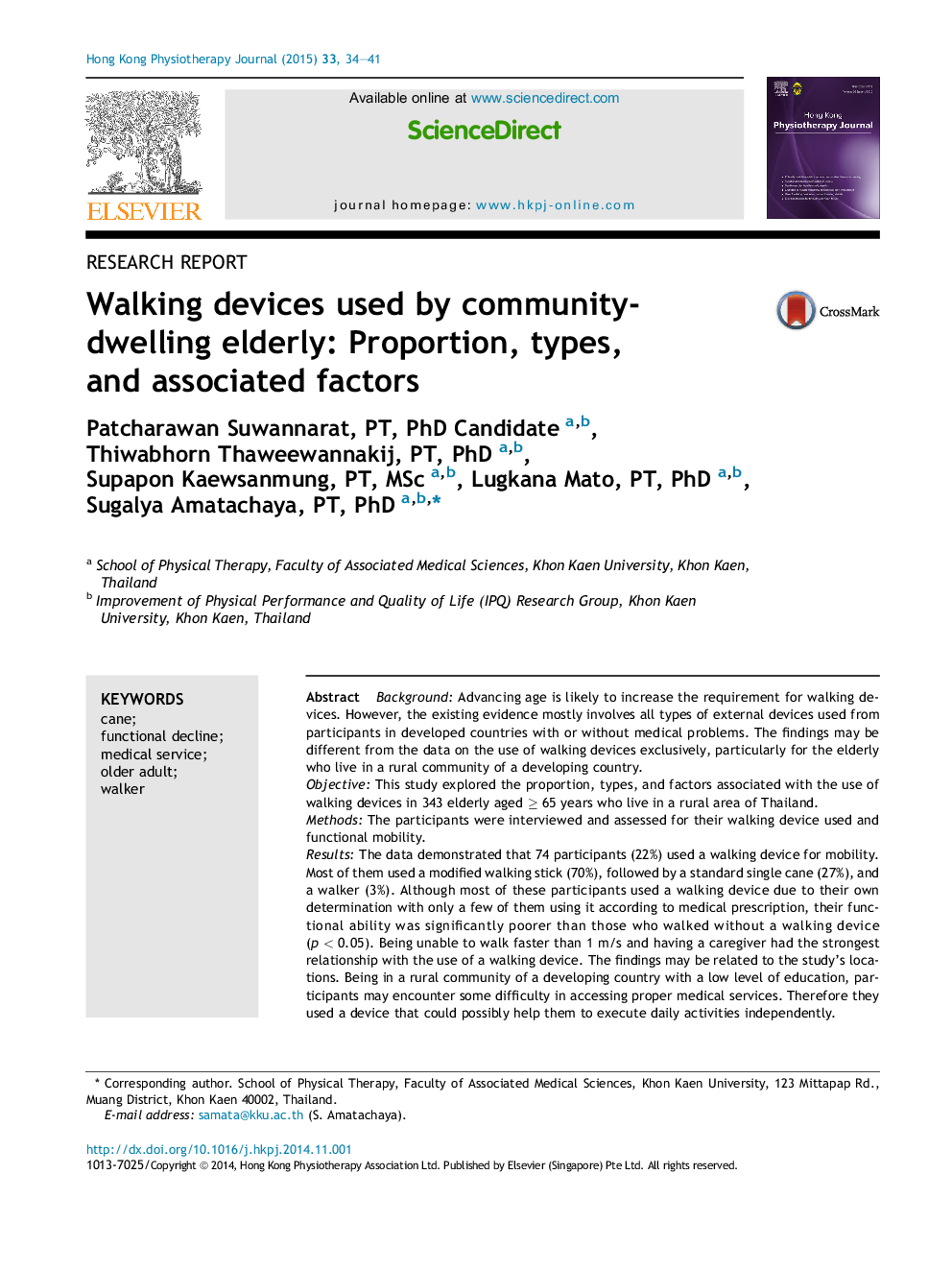| Article ID | Journal | Published Year | Pages | File Type |
|---|---|---|---|---|
| 2618269 | Hong Kong Physiotherapy Journal | 2015 | 8 Pages |
BackgroundAdvancing age is likely to increase the requirement for walking devices. However, the existing evidence mostly involves all types of external devices used from participants in developed countries with or without medical problems. The findings may be different from the data on the use of walking devices exclusively, particularly for the elderly who live in a rural community of a developing country.ObjectiveThis study explored the proportion, types, and factors associated with the use of walking devices in 343 elderly aged ≥ 65 years who live in a rural area of Thailand.MethodsThe participants were interviewed and assessed for their walking device used and functional mobility.ResultsThe data demonstrated that 74 participants (22%) used a walking device for mobility. Most of them used a modified walking stick (70%), followed by a standard single cane (27%), and a walker (3%). Although most of these participants used a walking device due to their own determination with only a few of them using it according to medical prescription, their functional ability was significantly poorer than those who walked without a walking device (p < 0.05). Being unable to walk faster than 1 m/s and having a caregiver had the strongest relationship with the use of a walking device. The findings may be related to the study's locations. Being in a rural community of a developing country with a low level of education, participants may encounter some difficulty in accessing proper medical services. Therefore they used a device that could possibly help them to execute daily activities independently.ConclusionOur findings may provide an insight into planning programmes for health monitoring and promotion, and medical services for community-dwelling elderly who live in a similar context.
